Kai Chiu / Pak Sha / Lan Fong Roads [????- ]
Primary tabs
These three roads in Causeway Bay have caught my eye recently. This building started me off, with it's pointy corner plot, and curvy windows. Have you noticed it too?
It's on the junction of Lan Fong and Yun Ping roads - that's Times Square in the background. It's always struck me that this building was very neatly finished. Look up, and you notice a little extra attention was given to it, with this type of detail on the rooftop:
Then if you let your eye wander, you suddenly realise that all the buildings along Lan Fong Road share this same detail:
One of the buildings' doors was open, so I took a look inside. The sides of the staircases are made from something like concrete, but given this lovely smooth curve:
Head up a few flights, and the restaurants and shops give way to flats. Thankfully the colour scheme also changes, reverting to the original finish:
Is there a technical name for this type of wall finish? It still looks good after 50+ years - better than the tiled coverings on our 20-year old apartment building.
Most of the building entrances have been remodelled in one way or another, but here's one that shows the original appearance, and the same green finish used in the stairwell:
As I wandered along, I caught a glimpse of these chimney stacks - just for cooking fires I'd guess.
I walked a zig-zag along Lan Fong, Pak Sha, and Kai Chu roads, and was pleasantly surprised to find that all the buildings in these blocks follow the same design. Well, all except #12 Pak Sha Rd. It's still the same height, but for some reason has a different facade.
One other slight difference is that the buildings along Kai Chiu Road are one storey shorter than their companions. Here's one of the shorter buildings on the corner of Kai Chiu & Lee Garden Roads:
Unfortunately, none of the other buildings have been kept as well as the first one we saw. Hoardings and shopfronts cover the original appearance:
What if they were all restored to their original appearance, the same as the 'curvy' building in the first photo? I think it would look a very smart and attractive couple of blocks.
Enough dreaming - what do we know about the history?
Centamap says that all these buildings were first occupied in March 1955, making them 54 years old. I find it unusual to see a relatively large area apparently devloped by a single developer at that time. And also that none have been replaced since by taller buildings.
Does anyone know who they were developed by, and if they are still owned by a single owner today?
These buildings formed the first dense development of this piece of land. As T has already mentioned, the area where the old Mitsukoshi store stood 'used to be the site of the 'Lee Gardens (利園)“ (a sort of amusement park without the machinery run by the same Lee family who later owned the Lee theatre and the Lee Gardens Hotel) which became 500 Hennessy Road in the late 1970's.'
A contour map of the area in the 1930s shows that there used to be a hill here, extending from Hennessy Road to Caroline Road, so it covered the area of the three streets we're looking at. (The map shows a few buildings up on top of the hill, and labels it 'East Point'. Was this the hill where the grand Jardines house once stood?)
On that old map, the route of today's 'Lee Garden Road' can be seen, though at that time it was named 'Two Hill Road'. The modern English name for the road loses any memory of a hill, but it's still there in the Chinese name, '利 園 山 道', which translates directly as 'Lee Garden Hill Road'.
What else do we know about this area?
Regards, David
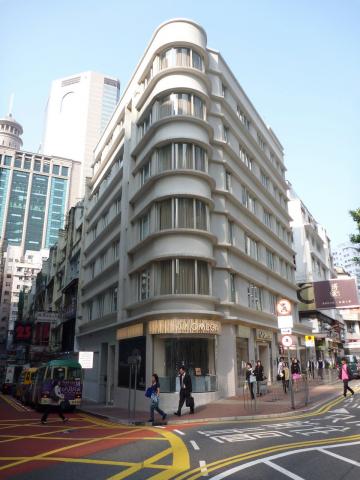
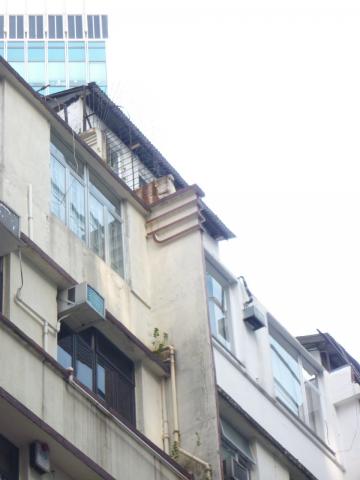
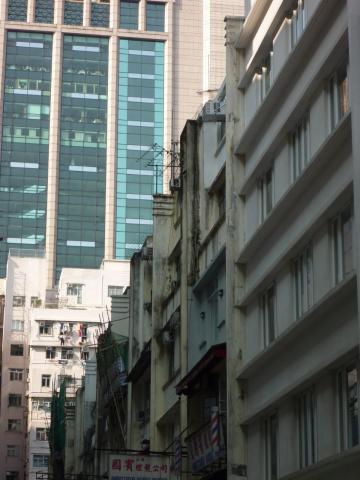
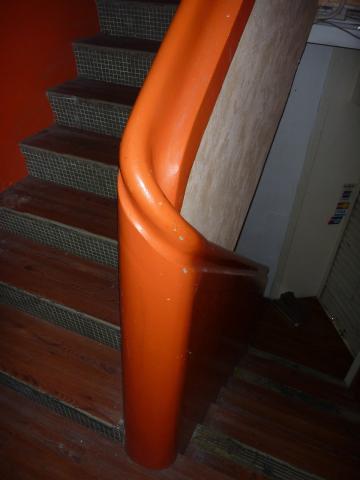
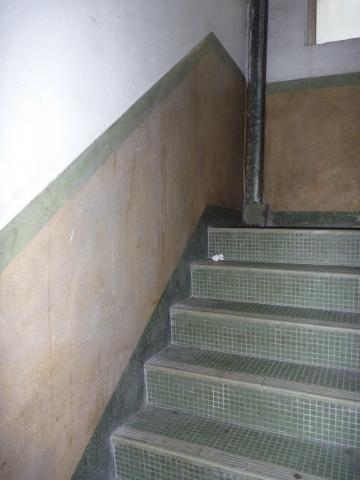
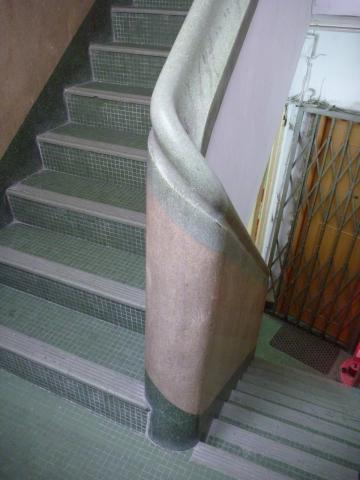

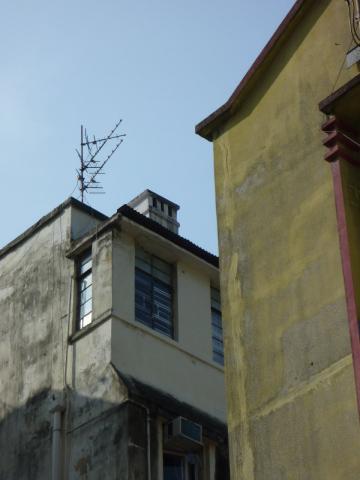

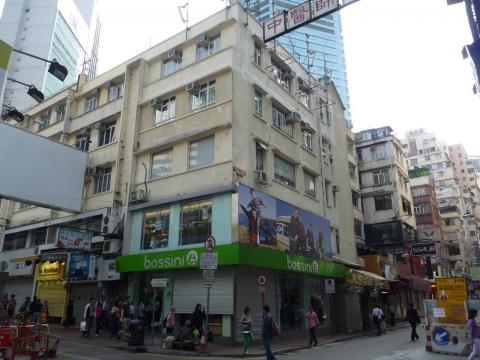
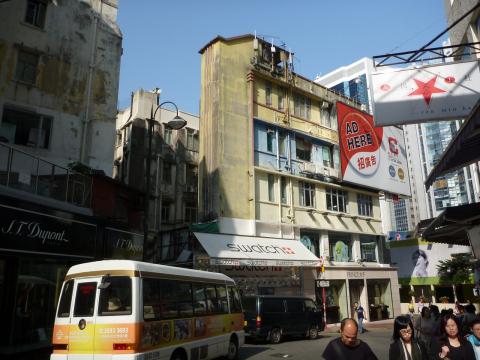
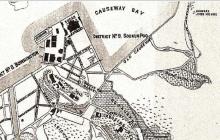
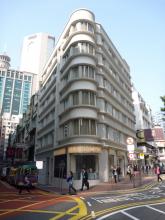
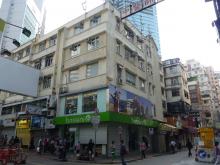

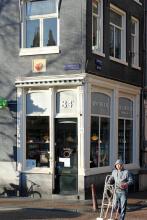
Comments
Re :Kai Chiu / Pak Sha / Lan Fong Roads
Hi there,
I believe the whole lot belongs to the Lee Family as well and the southern boundary of the Lee Gardens Amusement Park was probably extended towards Leighton Road. You would have to dig into the deeds to be sure after all these years, but if you take note of all those commercial buildings owned and developed by Hysen you should be able to see the approximate boundary if it.
As for the curvy building in the first photo, it was in such a good condition because it had been revamped just a few years ago.
And yes, the chimneys were all located at the back, where the kitchens were located. I used to live in Paterson Street and I could say I grew up in this area.
Best Regards,
T
Re :Kai Chiu / Pak Sha / Lan Fong Roads
T, Thanks for the extra information. Looking at the 1930s map, the boundary of the hill, starting from the northern edge and moving clockwise, was roughly:
I found some more information about the transfer from Jardines too:
East Point continued meantime to accommodate Jardines' godowns and junior mess. The Number One House on the hill, with its circular parterre and trees, also remained the taipans' winter residence, though in the sweltering summer heat they moved to the Mount, a massive baronial mansion on the Peak. In 1908 all the old East Point buildings were reputedly in excellent condition, although at about the time of World War I the junior mess, now beginning to collapse, was demolished.
The town was spreading out. As the taipan, D.G.M. Bernard said, 'the amenities of the place will be completely ruined by new reclamation,' and in 1923 they got what seemed then such a good offer from Lee Hysan of the Macao Opium Farm, that the decided to sell part of the property. He was to demolish the hill and develop the site with shops and apartment blocks.
For the European staff and Ho Leung, the firm's comprador, an emotional farewell party was held in Number One House on 31 December, 1923. The dining room was decorated with an illuminated picture of Hong Kong as it had been in the early days and, in the foreground, a model of the Cutty Sark. From each end of the dining room Chinnery portraits of William Jardine and Alexander Matheson looked down over candlelit diners as the Colonial Secretary, Claude Severn, rose to his feet to make a farewell speech. They all felt the impending loss of a great part of Hong Kong's early history - not least the lovely, ancient banyan trees, whose spreading roots and huge branches had sheltered the villagers of Sokonpo long before the firm's first settlers landed on the point.
The rest was finally pulled down and the site redeveloped in 1952, but the firsm still retains its old division today with offices in Jardine House, Central and Quarry Bay.
From page 221, 'The Thistle and the Jade'.
Have you any idea about the origin of these three street names, Kai Chiu / Pak Sha / Lan Fong? Are they linked to the Lee family or its business in some way?
Regards,
David
Lee Family
Does anyone know approximately where the Lee family mentioned in this article lived?
Re :Kai Chiu / Pak Sha / Lan Fong Roads
RE: Lee Family mansion
Re: Kai Chiu / Pak Sha / Lan Fong Roads
Thanks C, the stories behind the street names are interesting to know.
Re :Kai Chiu / Pak Sha / Lan Fong Roads
The curvy building on the corner of Lan Fong and Yun Ping roads wasn't just revamped a few years ago, its actually brand new. Through the 90s it was an empty plot which temporarily acted as a car park - which I remember because I always thought it was strange how cars could fit into such a tight area. When the present building popped up I was a surprised, to say the least, that instead of some tall glass edifice, a squat art deco building was erected. I had imagined it could've been an issue with plot ratio or planning permission, but I am unsure.
The buildings are all the
The buildings are all the same in appearance because they are subject to a building scheme imposed by the original owner (a Lee Hysan company). The owners of the plots were subject to covenants to "keep and maintain ... European style dwelling houses of a uniform design to be completed within 18 months ... of cement concrete with steel windows teak-wood flooring and servants stairs besides the main stairs ... and to keep the minimum frontage of each house not less than 23 feet facing Kai Chiu Road and Pak Sha Road respectively but such houses to be without balconies or verandah ... with the general specifications and in conformity with the levels to be supplied by [Lee Hysan Estate Co Ltd], the plans of such dwelling houses to be first submitted to and approved by [Lee Hysan Estate Co Ltd] whose approval shall not be unreasonably withheld".
The plots were sold to different people. Nos.6 and 8 Kai Chiu Road were the subject of litigation over 10 years ago - the new owner wanted to build a multi storey building and the question was whether it could do that. The litigation went all the way to the Court of Final Appeal, which confirmed that the new owner had to comply with the building scheme.
I have a top down view of
I have a top down view of that very corner from my apartment on Jardine's Bazaar. I'll post up a pic when I get back home from work tonight.
Cheers.
Re :Kai Chiu / Pak Sha / Lan Fong Roads
Thanks to everyone for the extra info, and I'll look forward to the overhead view of the area.
Funny how most times we're complaining about developers damaging old buildings, but here it's the developer's rules that keep the old buildings low, and with a consistent appearance.
Regards, David
signs of a colonial era
a good reference book 962 209 944 9.
isdl
Well, I'm not sure that the
Well, I'm not sure that the developer's motives for enforcing the building scheme were purely altruistic. The developer could (and presumably still can) relax the covenants upon payment. It's just that the purchasers of nos.6 and 8 argued that they could just ignore the building scheme...
I've posted a few top down
I've posted a few top down views of the "corner building" on my blog. any more requests?!
http://bonkersinhonkers.wordpress.com/2009/11/25/lets-get-historical/
re: top down views
It's good to see them from above - thanks for posting.
More requests? Funny you should ask - though in Central rather than Causeway Bay. Now that the old Queen's Theatre building has gone, I figure it should be possible to get a full view of the back of the Pedder Building from one of the nearby office blocks. If any readers work around there and can take a photo, please could you post it up for us to see?
Thanks, David
lee mansion in Kennedy Road
Does anybody have photos of the residence which is now Bamboo Grove. It was demolished in the early 1980's. Any historical data would be greatly appreciated.
kennedy road mansion
there was a good photo of it at the recent historical photo exhibition at the old recent police station. the bamboo grove development mimics the shape and layout of the mansion that was there before
RE: Lee mansion on Kennedy Road
The building scheme
The building scheme mentioned should be called the Deed of Mutual Convenant (DMC). It is a legal document and set out simply the duties and rights people living inside the builsing. Once the first owner signed the DMC in the purchase of flat, all the following owners of the same flat or owners of other flats within the site boundary of the DMC must comply. So you may say it is to a certain extent in favour of the property developer. Nowadays (I don't know since when), the Buildings Department has a set of guidlines on drawing the content of the DMC and it should be much fair to some extent.
You can get a copy of DMC of any building which with mutiple ownership from Land Registry for $100.
Lan Fong Road
I read with interest the discussion on the curvy building at the corner of Lan Fong Road.
My family and I lived on the 4th floor from 1960 until it was demolished around year 2000. Our neigbours like ourselves have lived there for a long time and in the late 1990s the landlord wanted us to move out so that the site could be re-develped. The negotiation was amicable at the beginning but after a while things got a bit rough. I was away from HK at the time with only my parents home. After a while their electricity supply were cut-off and even the pacing tiles in the starcase were removed. Fortunately the neighbours stuck together and eventually came to a settlement with the landlord.
Soon after we moved out the building was demolished but to our surprise the site was left empty and used as a parking lot. Eventually it was rebuilt and to my pleasant surpise in almost exactly the same style as the old block. It was sad to see a tangible part of my childhood disappeared but at least the new building was sympathetic to the old. We were never quite sure why the landlord when to all that trouble only re-create the building, until now when you explained the terms of the lease.
It would be good if the character of the area can be perserved as a linkage to the past. You took some lovely pictures of the front door, stairwell and bulstrade. I am particularly fond of the lift, a real mechanic contraption, without an inner door except for a grill, so that when the lift travels, you could see each floor moving pass and with the accompaning mechanical sound of a working machine which you don't get from a moden lift.
Well I can go on and on. Good to see that a small part of the past is still present.